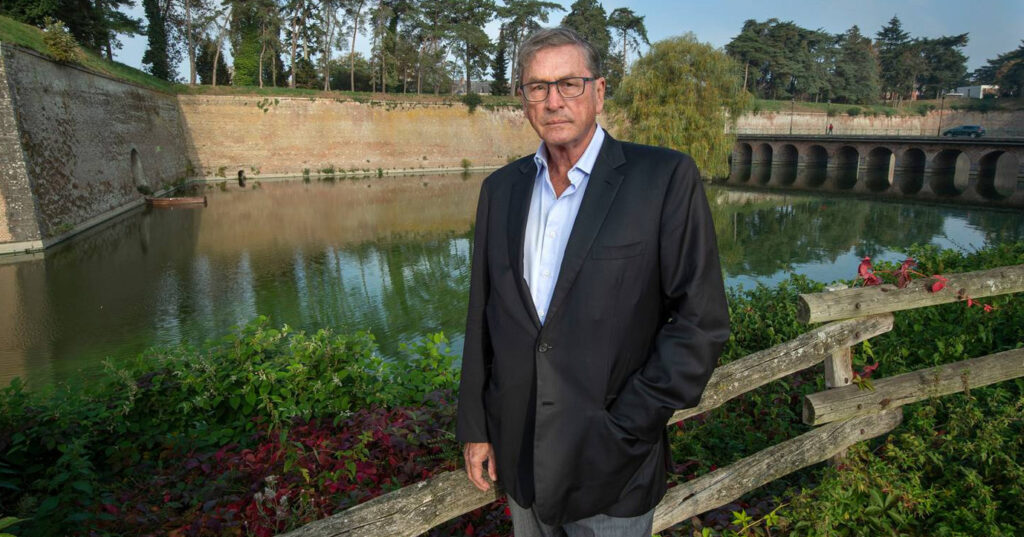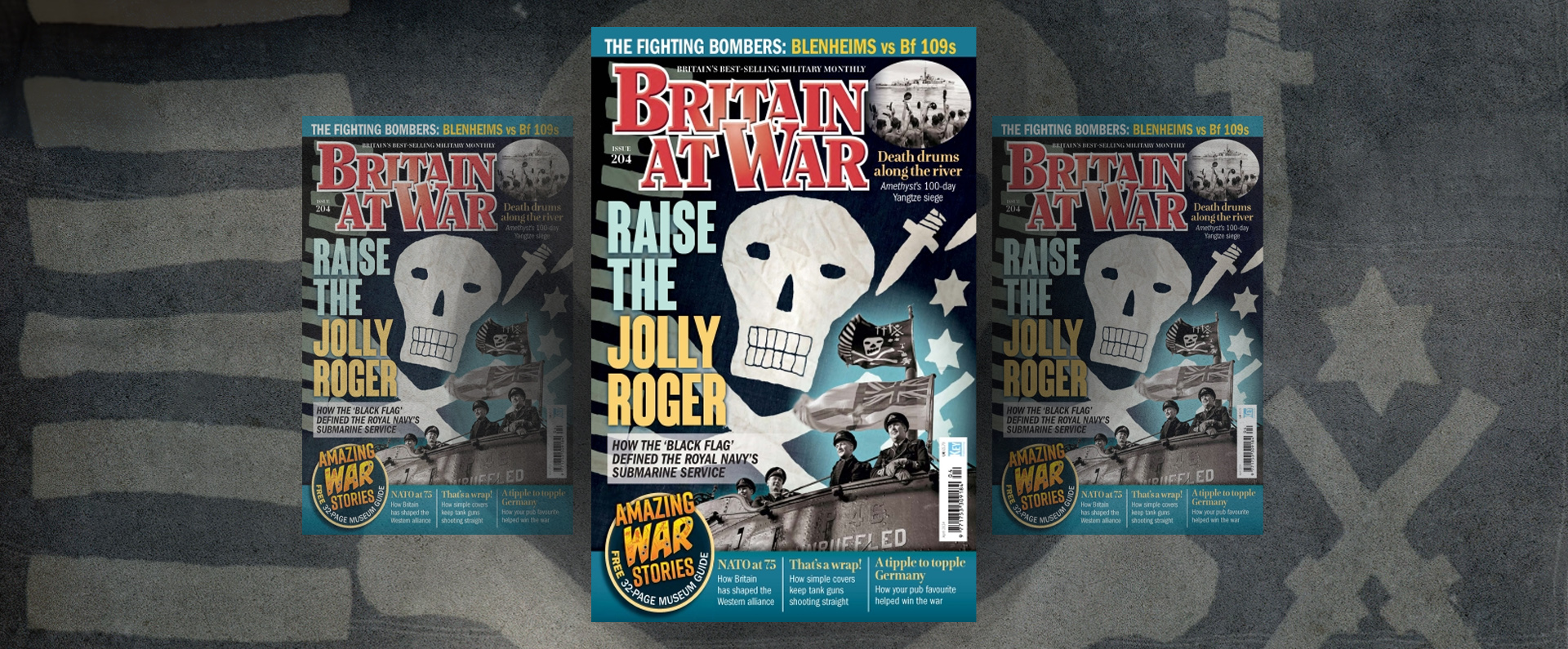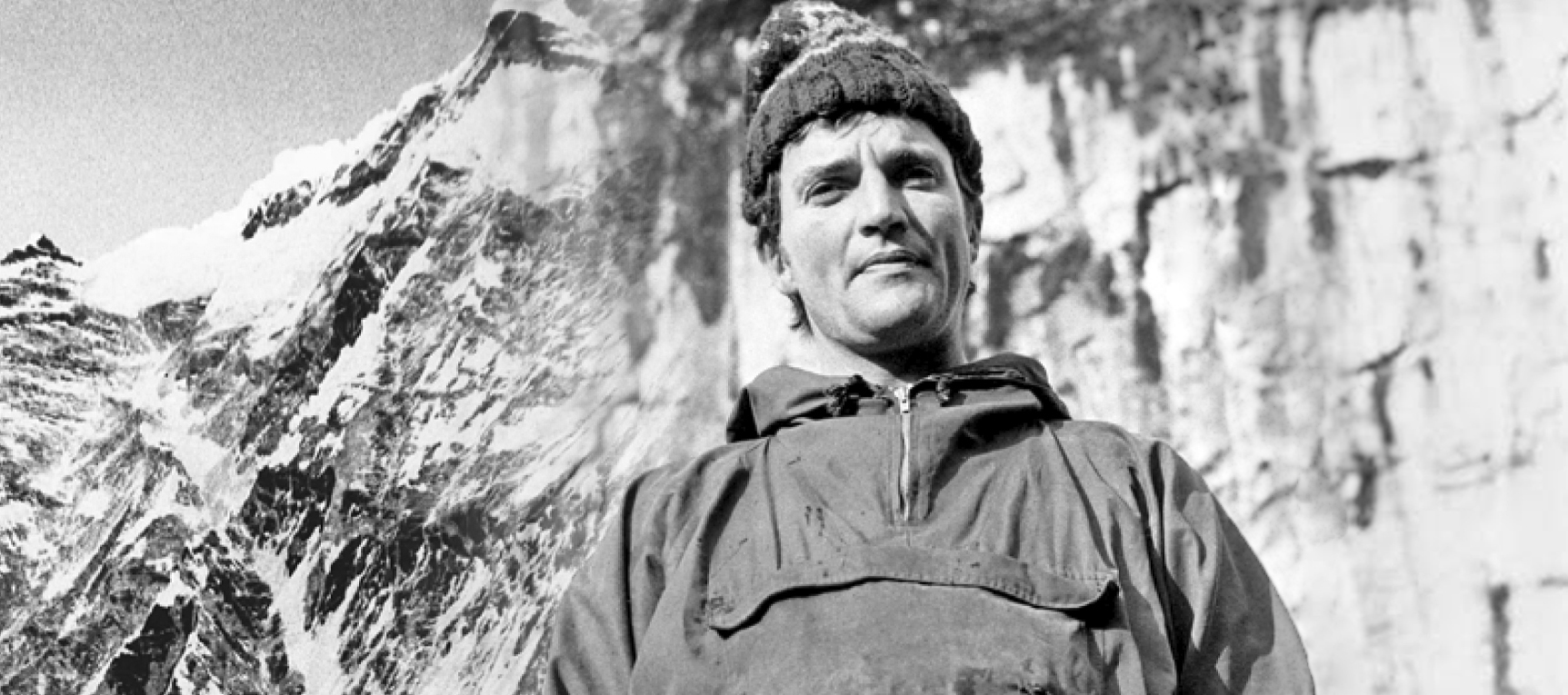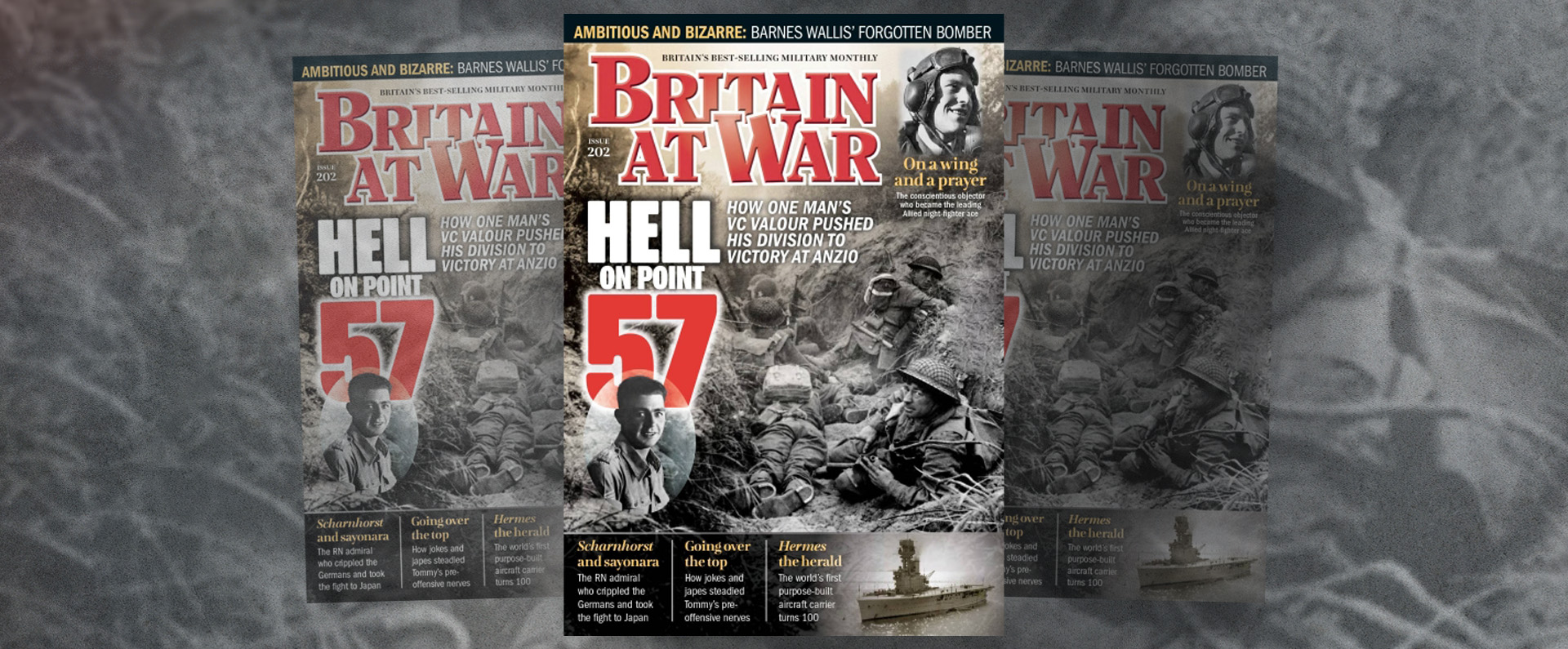
Published in the NZ Herald on 27 October 2018.
On a towering red-brick wall on the outskirts of the medieval, fortified town of Le Quesnoy, there is a white stone plaque that depicts soldiers, clutching rifles and bayonets, using a ladder to scale ramparts.
The words on the plaque read: “In honour of the men of New Zealand through whose valour the town of Le Quesnoy was restored to France. 4 Nov 1918.” It is a simple memorial to a remarkable event, one in which lives were lost but freedoms were gained.
The Capture of Le Quesnoy, New Zealand’s finest hour of the Great War and that took part only seven days before the Armistice, has long grabbed my imagination.
For many years, I have been determined, as a champion of bravery and as someone with a great affection for New Zealand and its people, to travel to northern France to investigate the momentous day’s events. However, I have never had the opportunity – until now.
For in the run-up to the centenary of both the Capture of Le Quesnoy and, a week later, the end of the Great War, I visited the town for the first time. I wanted to try to conjure up an image of what really happened during one of the most fascinating episodes in New Zealand’s military history.
MORE than a century ago Le Quesnoy (pronounced “Le Ken-wa”), which is situated close to France’s border with Belgium, had a population of around 5,000 people.
The town, which in the early 20thcentury was renowned for its shoemaking, had changed hands several times over the centuries and was occupied by the Germans in the first few weeks of the First World War – from August 23 1914.
By the autumn of 1918, after more than four years of brutal occupation and as the pendulum of the war finally began to swing in favour of the Allies, the enemy saw holding Le Quesnoy as vital to preventing the Allies from sweeping through France and towards German soil.
By early November 1918, the Germans had more than 1,500 troops garrisoned in Le Quesnoy. Not only was the town well-fortified and protected by deep moats but the Germans knew every nook and cranny, while the local population was demoralised and hungry after more than 50 months of misery and deprivation.
Even once they got within striking distance of the town, the Allies knew that they would be unable to launch a conventional artillery bombardment on the enemy. This would inevitably kill French civilians and there was even a possibility that Allied Prisoners of War were being held in Le Quesnoy.
Records at the Imperial War Museum in London reveal that during the war scores of Allied Prisoners of War (PoWs) had been held in the town, in terrible conditions including a giant “cage” earlier that summer.
The problems were formidable but Le Quesnoy needed taking. What was to be done? In late October, the New Zealand Division was tasked with capturing the town.
THE scenario that unfolded on November 4 1918 needs to be put into context. The New Zealand war effort had been immense from the very beginning of the Great War.
After the United Kingdom declared war against Germany early in August 1914, New Zealand answered the call to arms, without hesitation, despite its isolation on the other side of the worlds and its small population.
A remarkable 42 per cent of men of military age served in the New Zealand Expeditionary Force from 1914-18, fighting mainly in the Gallipoli Campaign and on the Western Front, as well as other theatres.
Furthermore, the New Zealand Naval Forces became a division of the Royal Navy, while New Zealand pilots and air crew served in the Royal Air Corps, the Royal Naval Air Service and, later in the war, the newly-formed RAF.
The number of New Zealand personnel to serve overseas during the Great War totalled well over 100,000: quite a contribution, especially when you bear in mind that the population of New Zealand at that time was just over a million.
In terms of the land war, New Zealand troops were trained largely in Egypt and the UK before being sent to frontline theatres. The tragic events at Anzac Cove on April 25 1915 and the brutality of the Gallipoli Campaign have been well documented.
It was little easier even after the Allied forces evacuated from Gallipoli in December 1915 and January 1916, an event which undoubtedly shook the confidence of New Zealanders abroad and at home that this was a war that would be won.
New Zealand forces played a full part in many of the major battles in the Western front, including the Battle of the Somme beginning in July 1916 and the Battle of Passchendaele starting a year later in July 1917.
After the Germans famous Spring Offensive (known also as the Kaiserschlacht – the Kaiser’s Battle) of 1918, an attempt to win the war before the full intervention of the Americans, New Zealanders undertook a vital role in stemming the assault and, later, in taking part in the counter-offensive.
BY October 25 1918, The New Zealand Rifle Brigade was only a few miles in front of Le Quesnoy but, with the enemy still in strength on the Cambrai to Valenciennes railway, it could not advance easily. However, later on that day, the 3rdNew Zealand Rifle Brigade, progressed their line beyond Ferme de Beart Wood and then pushed along the Orsinval road.
The next day a platoon led by 2ndLieutenant R.J. Richards was instructed to carry out a reconnaissance mission. However, as the men advanced towards Le Quesnoy, they were spotted and came under heavy enemy fire. Richards, wounded in the jaw and neck, took shelter with his men, pinned down by machine-gun fire and he was later taken prisoner along with six other wounded comrades.
There was sporadic fighting in and around Le Quesnoy over the next week and further territory was taken but it was not until early in the morning of November 4 that the 3rd New Zealand Rifle Brigade, with support, attacked the town.
A five-phase assault was planned, the first starting at 5.30am and the last starting at 10.20am. The aim was to attack the town from the north and the south under the cover of a smoke screen caused by oil mortars fired by its artillery.
The hope was that, if things went well, the town would be surrounded by mid-morning. Some seven battalions were tasked with playing a role in the attack which began when medium mortars opened up a specifically-targeted assault on the embankment and ramparts of Le Quesnoy.
The early exchanges, on the cool, misty morning, with the enemy generally went well. The 1stRifles captured 40 enemy as prisoners in an orchard on the outskirts of the town. Then when a 155-strong enemy force staged a counter-attack, 1stRifles cut them off and eventually took them all prisoners. However, during the heaving fighting, 1stRifles took 80 casualties, including 20 dead. The 2nd, 3rd, 4thRifles and other units also advanced successful but, once again, there were casualties.
By mid morning, Le Quesnoy was surrounded but efforts to take the town were frustrated by the spirited nature of the defence. At one point, Second Lieutenant F.M. Evans, commanding a “B” Company platoon of the 4thRifles, had clambered up one of the town’s walls with a scaling ladder but he and a comrade were both shot dead. Three others with them ended up pinned down by enemy fire for a further six hours before being able to retreat to safety.
On two occasions, at 11am and 3pm, enemy prisoners were sent into Le Quesnoy with an offer to surrender but on both occasions senior officers rejected the opportunities. Yet again, it was decided that a conventional bombardment would cause too many civilian casualties.
Reconnaissance of the defences continued in an attempt to break the deadlock. At around 4pm, No 14 Platoon of 4 Rifles had reached the western bank of the deep inner moat near the Bastion St Martin.
Initially the red-brick ramparts looked impregnable but, on closer examination, there was a vulnerable, unmanned spot where a 30-foot scaling ladder was just able to reach the top of the inner wall. Using such a frail climbing device meant only three men could be on the ladder at any one time.
With great apprehension, Second Lieutenant Leslie Averill, who was then 21, was the first up the ladder and, even with covering fire, his chances of survival seemed slim as he ascended. He later described the tension: “The 30-foot ladder was too short to reach from the bottom of the moat to the top of the final wall but there was one place where the ladder could be placed to reach the top. This was on a narrow stone bridge, about a foot wide, which spanned the moat and was connected with a sluice-gate.”
As Averill reached the top, he was relieved not to be greeted with enemy fire: perhaps rounds of machine-gun bullets or a well-aimed hand grenade. Instead, all he could see were two German soldiers fleeing towards the centre of the town and so he fired at them with his revolver as they scurried off. A pair of machine-guns pointing towards the moat had been abandoned.
Colonel H Stewart, the Commanding Officer of the 2ndBattalion, Canterbury Regiment, and later the author of The New Zealand Division 1916-1919, summed up the moment perfectly: “Averill quickly reached the top of the brickwork and stepped over the coping onto the grassy bank. Crouching behind it, he peered over. It was one of the most dramatic moments in the Division’s history.”
Soon hundreds of New Zealand soldiers were surging into the town, initially through the vulnerable ramparts and then through other entrances, including the main gates. Recognising the hopelessness of his position, the German commander surrendered after some sporadic hand-to-hand fighting inside the town walls.
In Averill’s own words, the Germans “threw up the sponge…after being under the heel of the Hun for four years, the delight of the people of Le Quesnoy at being free again knew no bounds.
“That their liberators came from the other side of the world to help them in their hour of need impressed them greatly and this battle, in which 90 of the NZ Division gave their lives, was a sacrifice which will never be forgotten.”
In fact, in the fighting that day in and around Le Quesnoy, 122 New Zealanders were killed and 375 wounded. Remarkably, there was not a single civilian casualty.
The Germans had 43 men killed and 255 wounded. Furthermore, some 2,000 German soldiers from in and close to the town were taken as prisoners, along with the capture of 60 guns.
It was New Zealand’s last major battle of the 1914-18 war and is widely regarded as its most successful. Within just seven days the ill-named “war to end all wars” was over.
As Matthew Wright, the respected New Zealand historian, puts it in his book, The New Zealand Experience at Gallipoli and the Western Front, the battle“in one of the ironies of history, ended with a splash of the ‘boy’s own’ style heroics that had always been part of the pre-1914 fantasy.”
After a world war that eventually claimed some 16 million lives (including civilians) and which will forever be remembered for its trench warfare, the brief siege of Le Quesnoy had been ended by an old-fashioned ladder-assault, one that would not have been out of place in the Indian Mutiny of 1857.
The French civilians who had been living under German occupation for more than four years were undernourished and weak. Unsurprisingly, their gratitude towards the New Zealanders saviours was, and indeed is to this day, immense.
It would be all too easy to say that the New Zealanders had defeated an enemy that was already beaten but this would be an over-simplification of events. Yes, the German commanders back in their homeland realised that they were heading for defeat. Yes, the morale of some German soldiers in France had been weakened by heavy losses on the battlefield and their enforced retreat.
However, the German troops inside the walls of Le Quesnoy were well-fed, well-organised and had been determined to hold the town. The New Zealanders victory was due to their superior determination and resourcefulness. It was a great victory and it thoroughly deserves to be commemorated a century on.
Make no mistake: the New Zealand Division under the command of the formidable Major-General Sir Andrew Russell was a superb fighting unit with a reputation for being one of the Allies most effective fighting forces.
Many photographs were taken of the New Zealander troops in and around Le Quesnoy in early November 1918. The black and white images are poignant reminders of one of the greatest days in New Zealand’s long and illustrious history.
Yet perhaps the most famous image from the assault of November 4 1918 is the painting by George Edmund Butler, an official war artist with the New Zealanders, who had the honorary rank of captain. Named “Capture of the Walls of Le Quesnoy” and painted in 1920, it recreates the moment when Averill reached the very top of the scaling ladder, revolver in hand, to earn his place in the history books as a true New Zealand hero.
In total, 16,697 New Zealanders were killed and more than 41,000 were wounded during the First Word War – a staggeringly high 58 per cent casualty rate. Some 1,000 men died within five years of the war’s end as a result of injuries sustained in battle.
The nation’s fallen are buried in cemeteries in France, Turkey and many other countries around the world. There are four national battlefield memorials in France at the Somme, Messines, Passchendaele and, of course, Le Quesnoy.
Vicar’s son Leslie Averill (in fact his father, Alfred, went on to become Archbishop of New Zealand from 1925-40) had been awarded the Military Cross (MC) for bravery at the Second Battle of the Bapaume in August 1918, but, perhaps surprisingly, he did not receive a further decoration for his role at Le Quesnoy.
He went on to serve occupational duty in Germany after the war ended. After leaving the military, he became a doctor, got married and eventually had four children.
Averillmaintained strong links with Le Quesnoy long after the war. He returned to the town in 1923 to unveil the New Zealand War Memorial and returned again in 1968 for the 50thanniversary of the relief of the town when he was appointedCitoyen d’honneur. A school and a street in Le Quesnoy were both named after him. Averill died on June 4, 1981, aged 84, having been made a Chevalier de la Legion d’honneur in 1973.
Today Le Quesnoy has a gate of honour and a memorial garden to honour New Zealanders. Numerous streets are also named with a New Zealand theme, including “Place des All Blacks”, while an inscription on one memorial wall honours its far-way liberators and reads: “To the uttermost ends of the earth.”
Since 1999, Le Quesnoy has been twinned with the New Zealand town of Cambridge on the North Island. St Andrew’s Church in Cambridge has a memorial stained glass window to honour the events in the French town.
At present, work is underway in the French town converting a splendid 19thcentury property into New Zealand’s first war memorial museum on European soil. The project is the work of the New Zealand War Memorial Museum Trust and it will, of course, be constructed partly in memory of the nation’s soldiers who died liberating the town.
In short, the affectionate bond between Le Quesnoy and New Zealanders will neverbe broken.
In the final hour of my visit to Le Quesnoy, I visited the Commonwealth War Graves Commission cemetery on the edge of the town where many of the courageous young New Zealanders, who lost their lives on November 4 1918, are buried.
As I walked slowly up and down the neat lines of white Portland stone gravestones, I felt humbled and privileged that I had finally been able to pay my respects to “the fallen” from such an historic and noble action. I, for one, will always remember them.
Read this article on NZHerald.com
For more information, visit:
LordAshcroftOnBravery.com


